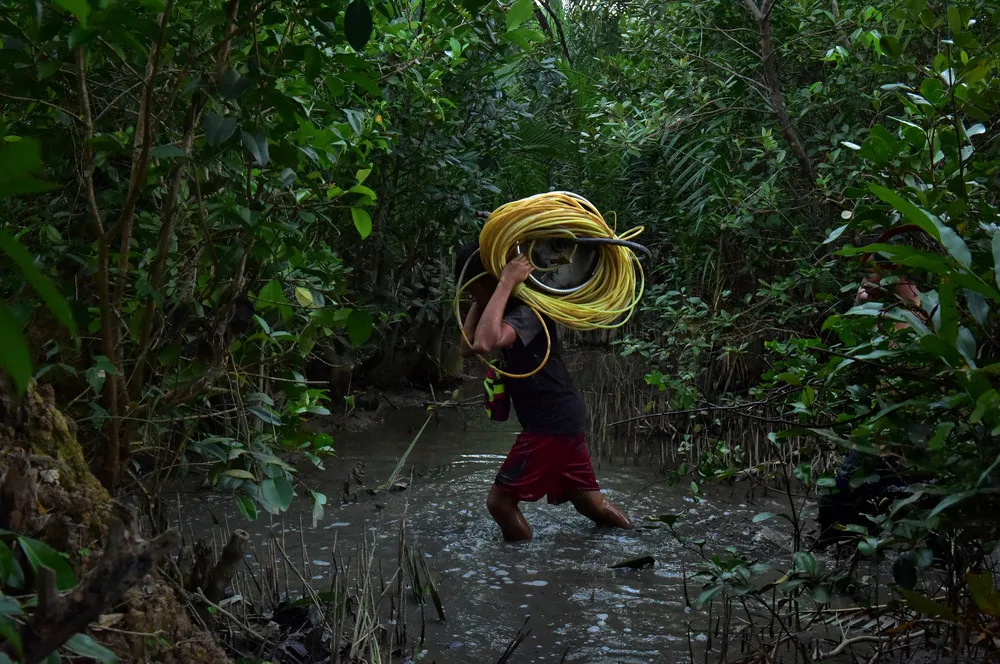|
A small-scale miner carrying plastic tubes used for breathing while looking for gold under the mud on March 22, 2017 in Paracale, Philippines. In the mining town of Paracale, about 350 kilometers south of Manila, a day's work of digging and sifting through hundreds of kilos of sand and clay, an artisanal miner can gather about a quarter of a gram of gold dust, enough to earn $5, enough for a family to go through the day's needs. For decades, local residents at Paracale town work in hazardous conditions scavenging under the earth and diving into tunnels filled with mud using only makeshift tools to mine for gold, often placing their health and lives at risk. Ban Toxics, a local NGO working at these sites claims that artisanal mining is a poverty driven industry and that small-scale miners typically work in harsh conditions with no proper training, protection, and pollution control methods. Local reports indicated the country produced about 18 tons of gold at a market value of over $700 million in 2014 while 80% of the gold comes from artisanal and small-scale mines which operate without a government license. The Philippines holds the largest copper-gold deposit in the world and is the fifth most mineral-rich country for gold, nickel, copper, and chromite, but massive environmental destruction prompted the new Department of Environment and Natural Resources secretary, Gina Lopez, to threaten many large-scale mining operations for closure. (Photo by Jes Aznar/Getty Images)
|

